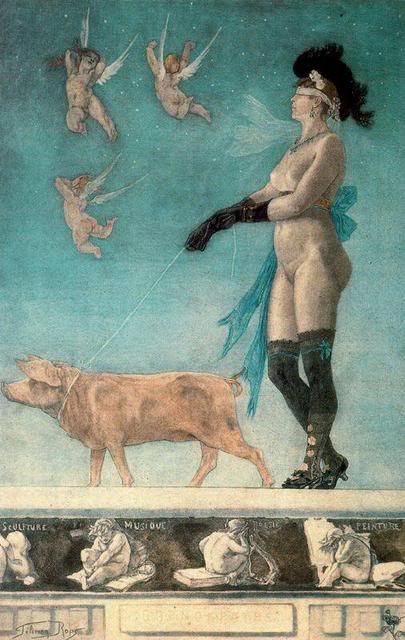
Laurie’s line is quite extensive comprising scents from different olfactory families, from warm Orientals to musk blends through dry woods and floral compositions. She first got inspired by the paysage of the Sonoma County with its oaks and redwoods, but also by her family’s beloved garden full of jasmine and roses. It was those blossoms that prompted her to source the best essential oils so she could enjoy floral scents year round and not just when the flowers are in bloom. Laurie however didn’t delve into perfume right away: she first earned a Bachelor of Sciences in Environmental Earth Science and a Master of Sciences in Geomechanics in Stanford University pursuing a career of technical writer. It is fortunate that her perfume business proved so successful that she decided to occupy herself with it exclusively.
In the 5 scents I tried I detected a common theme running through them, a resinous base of predominent labdanum and myrrh that gives them a deep resonance and a sensuous, slightly “dirty” character. The overall feel was that of scents that source natural essences; there is that familiar feel of non-perfumey ambience which I have come to recognise and appreciate. The onomastics somehow do not predispose one for a Californian meditative line, which is the only incosistency.
Encens Tranquille (quiet incense) is described as a meditative woody fragrance centered on incense, including notes of labdanum, frankincense, myrrh, cedar, sandalwood, ambergris, patchouli, oakmoss and musk. Deep incense, dense and dark, sobriety incarnate. There is the unusual tone of ocean and fish, if only for a moment as if a temple is situated on the seafront and you enter barefoot, with your hair still wet from a dip. And then a resinous explosion, murky, smoky. For those who are serious about their incense!
Champagne de Bois (forest champagne) is described as an effarvescent scent with aldehydic top notes, a heart of jasmine grandiflorum and carnation and a warm woodsy base of labdanum, sandalwood, cedar and musk. The opening is indeed sparkly, waxy, with a hint of flower which surfaces later. However the base of labdanum and cedar especially overshadow the blossoms rather too soon, suspending them in a mirage. It lasted incredibly long and seemed to grow more deep and dark with every passing moment.
Fireside Intense encompasses woods and resins along with a touch of leather and agarwood, evocing an evening sitting by a campfire. The scent truly captures the aroma of burnt coniferous wood, emanating from the mountains, embers glowing softly in the cool misty morning when the memory of the night has not yet been formed. Very dry and intensely smoky, it is a figurative painting of an American scene out of a Western film. It’s not the easiest to wear if you are working in an office with people who complain about fragrance wearing, but who cares? Fireside Intense has the rare gift of transporting the wearer to a more adventurous, quixotic existence where the men are ruggedly handsome, roasting salted meat and drinking inky black tea from a hip flask, gazing pensively over the horizon for new frontiers. I’m so there!

Laurie divulged to me that her bases, notably amber, are self-made and purposely drier than commercial perfumers’ supplies. Essences are diluted in pure perfumer’s alcohol for the eau de parfum concentration and natural fractionated coconut oil for the parfum oil base.
Jour ensoileillé (sunny day) is a floral jubilation, rich, warm and golden like a ray of sunshine on a lush countryside garden. Orange blossom, a little ruberose and jasmine marry their white synergy over a soft base of labdanum, sandalwood, ambergris, oakmoss and musk. The joy of the fragrance is contagious, as if a smile could be bottled and opened when the mood is grey and weary. The memento of summer into the heart of winter. A beautiful, feminine and exuberant fragrance with very good sillage and easily the prettiest of the bunch.
The rest of the line includes Voile de Violette (a violet and iris accord over a woody bottom), Rose Musc (a feminine blend of rose and musk on an ambergris base), Opal (a soft, vanillic clean skin musc I am personally very curious to try), Bois Epicés and Bois Epicés Legère (warm and cosy scents) and Cameo (a powdery feminine floral with rose and violet).
All the scents I tried reviewed above came in Eau de Parfum concentration, which is incredibly dense and lasting; much closer to parfum actually than most lines I have tried and therefore excellent value for money. A parfum version is available as well for people who want a closer to the skin experience that projects less. Additionally, body creams made with 20% moisturising shea butter and all natural oils (scented to the fragrance of your choice or unscented) are available.
Sonoma Scent Studio also takes requests for custom scents or all natural scents with prices varying according to ingredients used.
See details and contact on Sonoma Scent Studio site.
Leather Series will continue next week with iconic representations! Stay tuned.

.jpg)









.jpg)
